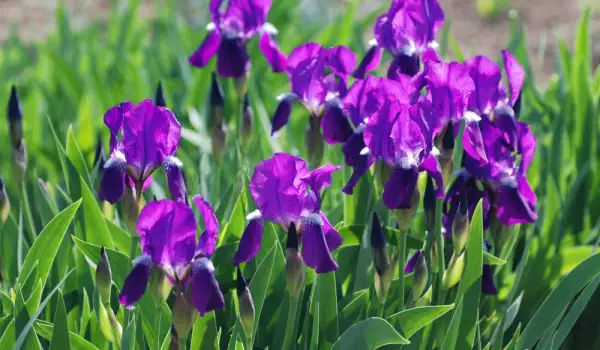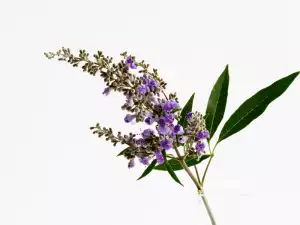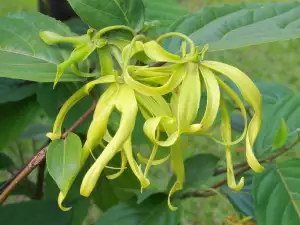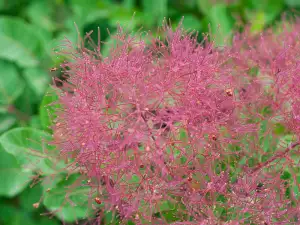Iris is an herbaceous perennial plant of the Iridaceae family. It has bare and straight stems, reaching up to 3.5 ft (1 meter). The leaves are large and xiphoid and have ovaries in two rows, arranged in a single flat plane.
Stem leaves are linear or oblong-linear. The flowers of the iris can be blue, yellow, white or purple. Iris is one of the most beautiful plants that can be planted in a garden or vase. Iris blooms in May-June, it is imported from the Mediterranean.
Irises are an extremely diverse group of plants. There are species with heights of 3.5 ft (1 meter), as well as dwarves. Great variety exists in the colors.
Growing iris
Iris adapts to indoor growing conditions very easily. It blooms in January-February then. The bulbs can be purchased from flower shops, and they do sell three types of iris for growing in the house - deep purple, yellow and violet with yellow stripes.
Young bulbs are planted in pots in autumn, while in spring – seedlings. The distance between the seedlings needs to be 4″ (10 cm), a depth of 2.5″ (6 cm) is needed for planting.
Planted containers are maintained slightly damp until germination of the plants. Irises need to be watered regularly from the beginning of germination to the yellowing of the leaves. They should not be allowed to retain water because of the risk of decay.
In the period of growth, they should be fertilized twice. Once the leaves become yellowish, you can keep the plants drier.
Planted in the garden, irises bloom in May and June. They love shaded to semi-shaded locations, fertilizing is needed twice during growth.

Be careful, because the greatest enemy of the iris are small grey insects moving along with their larvae. In order to destroy them, they must be sprayed with the appropriate substances. In autumn, the yellow leaves are set aside but are not detached.
Composition of iris
Iris components include essential oils, sugar, fats, tannins, starch, iridium, isoflavone irigenin and others.
Benefits of iris
Iris is very successfully used as an herb, that is famous for its healing properties. It has a powerful soothing effect. Because of this expectorant effect, it is used for coughs and bronchitis.
Iris has a good ability to replenish gut flora and to neutralize decay processes. This makes it a great tool against biliary pain and stomach problems, as well as liver diseases.

At the same time, iris can be used to alleviate the side effects of the administration of potent drugs or antibiotics.
Externally applied, iris helps with reducing swelling on the body, relieving wounds, skin irritations, bruises and burns. Iris has good diuretic properties. In the past, potions of the plant have been used for the treatment of rabies, syphilis, diseases of the blood and general body cleansing.
Iris has very good secretolytic and analgesic actions. It relaxes the smooth muscles of the respiratory tract and reduces the pain of the emergence of teeth in small children.
Iris is used to combat ulcers and colitis, toothache and gastritis. It is used in cosmetics and perfumery, in the production of pastes, soaps, powders and more.
1 tsp of diced iris root is brewed in 1 cup of boiling water. Allow to soak for about an hour, then filter and drink 1 coffee cup of it before eating, three times daily.
For external use, prepare an extract of 1 tsp of chopped roots, soak in 1 cup of water and leave to stand for 8 hours. Consume it within a day.
Dangers of iris
Iris should be used under medical supervision because it is toxic, and an overdose can cause negative side effects.








Comments